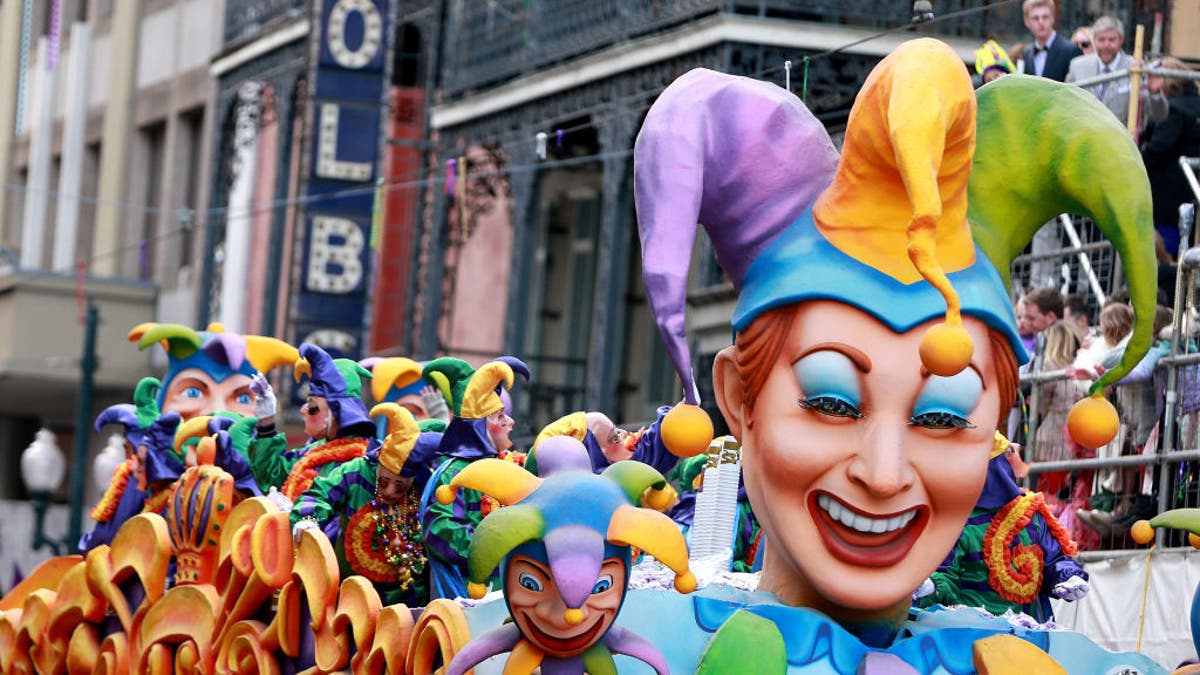Southeast
On this day in history, February 27, 1827, New Orleans celebrates Mardi Gras for first time
The people of New Orleans took to the streets to celebrate Mardi Gras for the first time on this day in history, Feb. 27, 1827.
“A group of students in masks and costumes paraded through the streets, partying and dancing,” reports National Geographic about the origins of the festival in New Orleans.
The Crescent City is globally associated with the Roman Catholic festival today.
Yet it was actually celebrated for the first time in American 124 years earlier in Mobile, Alabama.
ON THIS DAY IN HISTORY, FEBRUARY 26, 1993, WORLD TRADE CENTER BOMBED IN HORRIFIC ATTACK
The celebratory excess of Mardi Gras (Fat Tuesday in French) is followed by Ash Wednesday, a solemn day in Christian tradition. It begins six weeks of Lent, preparation to mark the crucifixion and then, on Easter Sunday, the resurrection of Christ.
Mardi Gras in New Orleans is rooted, like many other Christian traditions, in seasonal pagan rituals, flavored by the uniquely rich cultural stew that shapes the city today.
The 2023 Krewe of Proteus parade took place on Feb. 20, 2023, in New Orleans, Louisiana. (Erika Goldring/Getty Images)
Lupercalia, a hedonistic celebration held each February in Ancient Rome, is one of the traditions adopted by Christians that shape Mardi Gras, according to various sources.
Mardi Gras after 1827 quickly grew into a more formal event, one now deeply embedded in New Orleans culture.
“The celebratory excess of Mardi Gras (Fat Tuesday) is followed by Ash Wednesday, a solemn day in Christian tradition.”
“The parties grew more and more popular, and in 1833 a rich plantation owner named Bernard Xavier de Marigny de Mandeville raised money to fund an official Mardi Gras celebration,” says Hiistory.com.
“After rowdy revelers began to get violent during the 1850s, a secret society called the Mistick Krewe of Comus staged the first large-scale, well-organized Mardi Gras parade in 1857.”
PIRATES ROAM SEAS AND STREETS OF TAMPA, OFFERING FAMILY-FRIENDLY ENTERTAINMENT TODAY
Krewes — social clubs common in communities around the Gulf of Mexico — continue to organize and define Mardi Gras today.
The krewes of Tampa, on Florida’s Gulf Coast, are responsible for that city’s 119-year-old pirate-themed Gasparilla festival, held each year, also in late winter.

Members of the Krewe of Rex King of Carnival parade down St. Charles Avenue Mardi Gras Day on March 5, 2019, in New Orleans, Louisiana. (Sean Gardner/Getty Images)
“Comus is recognized as the oldest continuously operating Carnival krewe in New Orleans, although it stopped parading rather than submit to a 1991 City Council ordinance requiring parading organizations to certify they did not discriminate in choosing members,” the Times-Picayune of New Orleans reported in 2017.
“The krewe continues to hold a ball on Mardi Gras night, and Comus, Rex and their consorts meet there each year to declare the end of Carnival.”
WHAT IS MARDI GRAS, WHERE DID IT ORIGINATE AND HOW SHOULD YOU CELEBRATE THE CHRISTIAN OCCASION?
Several sources, including the official website of Mardi Gras New Orleans, tip their cap to nearby Mobile, Alabama, for the honor of the nation’s first Mardi Gras.
“On March 2, 1699, French-Canadian explorer Jean Baptiste Le Moyne Sieur de Bienville arrived at a plot of ground 60 miles directly south of New Orleans, and named it “Pointe du Mardi Gras” when his men realized it was the eve of the festive holiday,” writes MardiGrasNewOrleans.com, the city’s official festival website.
“Mardi Gras originated in 1703 right here in our port city.” – VisitMobile.com.
“Bienville also established ‘Fort Louis de la Louisiane’ (which is now Mobile) in 1702. In 1703, the tiny settlement of Fort Louis de la Mobile celebrated America’s very first Mardi Gras.”
New Orleans Mayor LaToya Cantrell arrives by horseback at the reviewing stand at Gallier Hall as the 1,500 riders of the Krewe of Zulu roll down St. Charles Avenue on Mardi Gras Day with their 44-float parade entitled Zulu Salutes Divas and Legends on March 1, 2022, in New Orleans, Louisiana. (Michael DeMocker/Getty Images)
“Mardi Gras originated in 1703 right here in our port city,” says VisitMobile.com.
“It was revived after the Civil War when citizen Joe Cain, fed up with post-war misery, led an impromptu parade down city streets. We’ve been doing it ever since, and we mark the annual occasion with majestic parades, colorful floats and flying Moon Pies.”
Mobile entertains a million Mardi Gras revelers each year, the city proclaims, with “elaborate themed floats manned by masked mystic societies, mounted police and marching bands.”
Mardi Gras, which this year was Feb. 21, is merely the end of more than a month of celebration before Lent.
“Technically, ‘Carnival’ refers to the period of feasting and fun that begins on January 6 (Epiphany) and ends on Mardi Gras,” writes Mardi Gras New Orleans.
“Locals tend to call the season ‘Carnival’ and, to us, the last two weekends leading to Tuesday are ‘Mardi Gras.’”
A Mardi Gras attendee wearing a flowered costume waves and smiles after a parade in the French Quarter on Feb. 21, 2023 in New Orleans, Louisiana. Fat Tuesday marks the last day of Carnival season, where costumed attendees flock to multiple parades and parties citywide. (Jon Cherry/Getty Images)
Mardi Gras has grown into a global celebration enjoyed by people of many cultures and traditions, but still rooted in cities with large Roman Catholic communities.
Rio de Janeiro, Brazil and Venice, Italy, also feature large, globally renowned Carnivals.
Mardi Gras in New Orleans remains a uniquely spectacular celebration highlighting the incredible diversity of Catholicism in the United States.
“Mardi Gras traditions are heavily influenced by the cultural history of New Orleans—a rich gumbo of Native American, Spanish, French, Cajun, African American, and Caribbean cultures, combined with the economic and cultural influences of the Mississippi River,” writes National Geographic.
For more Lifestyle articles, visit www.foxnews.com/lifestyle
Read the full article from Here